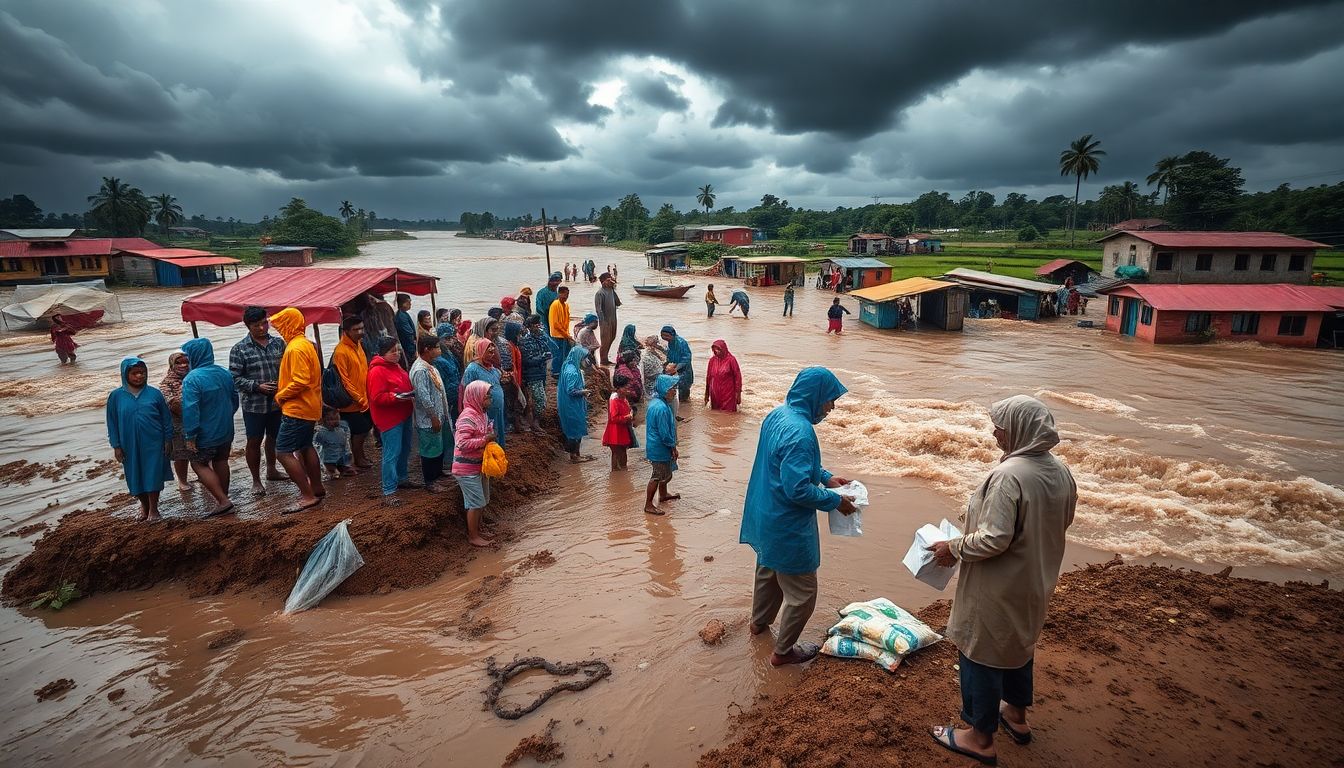Explore Pharmaceutical Formulation Companies in India – Medicef Pharma Insights
Explore leading pharmaceutical formulation companies in India through Medicef Pharma Insights. Stay informed and elevate your understanding of the market.

Floods are happening more often and hitting harder because of climate change. With rising waters come serious health dangers. Outbreaks of waterborne and disease-carrying insects can quickly put communities at risk. Being prepared with the right prevention steps can save lives and keep people healthy.
Floodwaters often carry dangerous diseases. Waterborne illnesses like cholera, typhoid, and hepatitis A are common during floods. These spread through contaminated drinking water. Also, fallen water levels create breeding grounds for mosquitoes, which carry diseases like malaria and dengue. Plus, mold growth and dirty surroundings can cause respiratory infections, especially in crowded shelter areas.
Several factors make flood-related illnesses worse. Drinking water sources get contaminated easily. Poor sanitation and waste disposal load local water and soil with germs. Displacement forces many to live in crowded shelters with limited clean water. All these conditions make it easier for diseases to spread fast.
Recent studies show a clear link between climate change and rising flood-related diseases. Warmer temperatures and unpredictable weather expand mosquito habitats. More floods mean more contaminated water. To protect vulnerable regions, countries need to adapt and strengthen health systems.
Spreading awareness is key before and during floods. Informing people about hygiene and safety reduces disease risk. Campaigns using local radio, flyers, and community leaders help get messages across. Clear teachings on handwashing, safe water, and waste disposal can make a huge difference.
Governments and health groups need solid plans. Early warning systems can alert communities about floods. Training volunteers helps organize quick responses. Having a plan in place means you react fast, giving everyone a better chance to stay safe.
Preparing in advance includes gathering water purification tools, medicines, and protective gear. Things like water tablets, filters, salts for dehydration, masks, and gloves are vital. Stockpiling means aid can reach people quickly when floods hit.
Safe water stops many illnesses. Boiling water is the simplest method. Chlorination works well too. Using water filters or purifiers helps remove germs. It’s important to protect water sources and encourage families to treat their drinking water.
Proper waste management prevents contamination. Set up portable toilets and waste collection points close to shelters. Handwashing with soap regularly reduces bacteria. Sewage must be managed carefully to avoid mixing with clean water sources, lowering disease risks.
Inspect water sources on a regular basis. Rapid testing helps catch contamination early. If unsafe levels are found, treat water immediately. Community health teams should stay alert and act fast to protect everyone.
Encourage handwashing after using the bathroom or handling food. Wear protective clothing and footwear to avoid contact with dirty water. Keep food covered and handle it carefully to prevent illnesses.
Vaccines like cholera and typhoid can save lives. Prioritize vaccinating at-risk populations. Mobile clinics can offer quick access to medicines and vaccines. Spotting symptoms early helps treat cases before they worsen.
Mosquitoes breed in stagnant water. Remove standing water in containers and ditches. Use insecticide-treated nets in homes. Organize community cleanup drives to cut down mosquito habitats.
After floods, clear out debris and fix drains. Proper waste removal prevents future outbreaks. Rebuild sanitation facilities sturdy enough to withstand floods. Long-term urban planning reduces future flood damage.
Keep updating communities on health risks. Regular disease monitoring spots outbreaks early. Promote good hygiene habits that last beyond floods. Strong health systems can better handle future emergencies.
Governments must craft clear disaster plans and policies. Enforce sanitation laws and building codes. Invest in flood-resistant infrastructure. Strong policies give communities safer places to live and lower disease risks.
Floods bring big health challenges, but many dangers can be prevented. Focus on clean water, good sanitation, and community education. Preparedness makes all the difference in stopping disease outbreaks. Working together—communities, health officials, and policymakers—can reduce the health toll of floods. Start planning now to better face the next flood season. Protect your health and that of your loved ones by acting early and staying informed.
Explore leading pharmaceutical formulation companies in India through Medicef Pharma Insights. Stay informed and elevate your understanding of the market.
Explore the synergy of CO-AMOXICLAV and Lactic Acid Bacillus. Uncover their roles in promoting health and fighting infections effectively.
Discover how beta-lactam antibiotics combat bacterial infections by disrupting cell wall synthesis. Learn about their mechanisms and effectiveness today.
Explore our premium ready-to-compress granules designed for tablet formulation. Achieve optimal results in your production with our innovative materials.
Discover how we ensure quality pharmaceuticals remain affordable, making healthcare accessible for all. Explore our commitment to excellence and value.
Discover the comprehensive guide to Amoxicillin and Clavulanic Acid Sachet BP. Learn about its uses, benefits, and important dosage information for effective treatment.